Biodegradable-PLA -PP-Compounds 10-12-2022 - Arhive
Biodegradable-PLA -PP-Compounds
-US EPR adoption to drive up plastic recycling rates over time
The adoption of extended producer responsibility (EPR) laws in more US states will drive up plastic recycling rates over time, a consultant said.
“We’ve seen over the last 20 years a real explosion in the use of EPR as a policy tool for packaging and paper products [PPP]. It was in the EU and has now expanded to most of the industrialised world and starting to take hold in the US as well,” said Resa Dimino, managing principal at consultancy Resource Recycling Systems (RRS) and managing partner at RRS subsidiary Signalfire Group.
“We’ve come to the realisation in the US that our recycling system needs a stable and secure funding source,” she added, noting that China’s ‘National Sword’ policy exposed the fragility of the US recycling system.
China’s National Sword policy in 2017 banned imports of plastic waste and other waste, forcing other nations to deal with their own waste issues rather than exporting the problem.
Dimino spoke at the ICIS Recycled Polymers Conference in Atlanta, Georgia, US.
EPR is a policy approach where producers of a product or package – namely the brand owners rather than converters or resin producers – take responsibility to manage that product or package at the end of its useful life, explained Dimino.
The responsibility can be financial or operational, or often a combination of both, she added.
MOMENTUM BUILDING
In the US, EPR laws have been passed in four states so far: California (2022), Colorado (2022), Oregon (2021) and Maine (2021), with others having introduced legislation.
“We think most of these states are going to be active as we move into 2023 – states like Washington, New York, Minnesota, New Jersey and Maryland will all have very active EPR debates,” said Dimino.
Municipalities are not a resilient funding source for recycling, she argued, pointing out that when costs change dramatically, they are not ready to cover these costs.
US recycling rates have also been stagnant or dropping in recent years, she added.
“Clearly what we’re doing is not working…It’s not delivering the material needed,” said Dimino.
ROLE OF THE PRO
Typically, EPR programmes are managed by a producer responsibility organisation (PRO) – an entity created to fulfil the obligations of multiple producers – so that the municipality doesn’t have to deal with getting reimbursed by multiple individual brand owners, she explained.
The PRO essentially manages the recycling programme, coordinating among all the players in the chain – recycling service providers, waste haulers, material recovery facilities (MRFs), local governments, end markets and processors to achieve results. The brand owners pay fees into the PRO to fund it.
Thus, the government moves to the side, although the extent of participation differs state by state.
NOT A RATIONAL ECONOMIC MARKET
“You have municipalities who really don’t see their job as sitting at the beginning of a supply chain. They see their job as serving their residents to make sure recyclables are collected, so they may or may not be doing a serious job of playing their role in the supply chain,” said Dimino.
“When we have such high demand [for recycled plastics], it’s really critical to understand that municipal recycling is not a rational economic market – it’s not a supply/demand market. You can pay more but you’re not going to get more. Why is that? The municipality is not a rational economic actor,” she added.
While a brand owner may pay more for post-consumer resin (PCR) to a converter and a converter may pay more for PCR to the reclaimer which goes back to the MRF in terms of the bale price, the municipality may not see any of that revenue, she explained.
Plus, no financial signal goes to the consumer to compel them to recycle.
“When I’m in my kitchen rinsing out my HDPE [high density polyethylene] milk jug, I’m not likely to be thinking, this is worth $1/lb – I better put this in my recycling bin. That message is not getting across and it’s not driving people,” said Dimino.
EPR has been proven to drive up recycling rates wherever it’s been implemented for packaging around the world, according to a study conducted by the RRS for the state of Oregon.
“Where we could find comparable pre- and post-programme data, in every instance we found an increase in the recycling rate,” said Dimino.
ERP programmes will also take some time to make an impact, the consultant noted.
“For those of you that are looking for materials to come through these programmes, you won’t see any additional funded collection until 2026 or 2027, but the processes are starting already,” said Dimino.
KEY OBSTACLES
The key obstacles to implementing EPR more widely include entrenched interests in doing things the way they’re done now, along with hesitancy from brand owners to shoulder additional costs and the view that it’s the government’s job to ensure efficient recycling systems, she said.
“In any substantial change, there are going to be winners and losers, and no one wants to be a loser. So, it’s easier to keep things the way they are,” said Dimino.
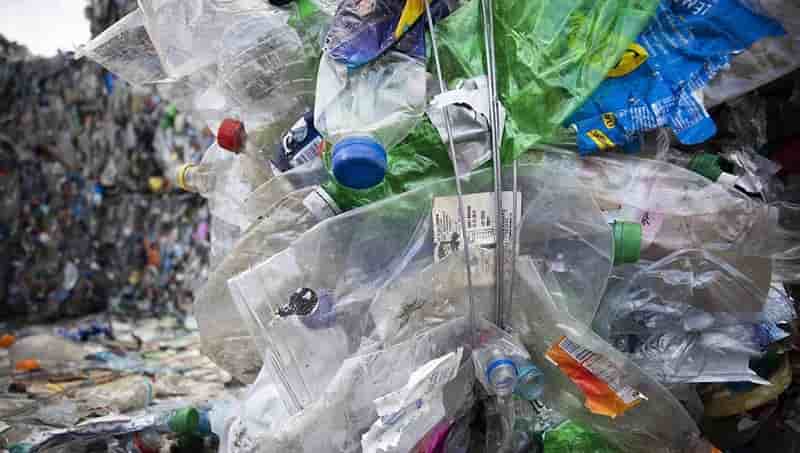
-Coveris launches Recover – a ground-breaking approach to keep plastics circular
Fully in line with its award-winning No Waste vision, Coveris is now introducing a new business segment named ‘ReCover’, bundling all efforts in waste sourcing, processing, and recycling to close the loop for circular plastic recycling. ReCover will act as a separate company supplying Coveris sites on an arm’s length basis but also supplying third party customers that are interested in recyclates on a quality level that are not available in the market today.
As part of its sustainability strategy, Coveris has already announced the ambition of reducing waste in all its forms. Expanding its recycling capacity and capabilities is just the next logical step for avoiding pollution and supporting customers in their sustainability efforts.
“With ReCover, we have launched a game-changing process – unique within the entire industry. With several high-impact projects in the pipeline, we are aiming at establishing a stand-alone Business Unit in the next couple of years, entirely dedicated to circular economy and closing the loop. ReCover is a platform for all mechanical recycling activities but also leads our developments to achieve food contact compliant materials.” comments Jakob A. Mosser, CEO Coveris.
To further strengthen and expand its recycling capabilities Coveris has recently acquired the site and assets from Capital Valley Plastics (CVP) Blaenavon in Wales, UK. CVP is a well-established PE recycler, processing post-consumer and post-industrial waste via in-house mechanical recycling extruded mostly into building films. The Blaenavon site is equipped with the latest state-of-the-art mechanical recycling technology, with an annual capacity of 20k tons. Biodegradable-PLA -PP-Compounds
“The newly acquired Blaenavon site and assets will serve as an important recycling hub for Coveris’ Films and Flexibles operations, closing the loop for customers and for our own film production across the network. This new recycling acquisition marks a perfect start for our new company ReCover and our quest to continuously enhance our recycling offers to our customers, truly closing the loop and bringing us closer to our vision of No Waste.”, closes Mosser.
PRESS CONTACT
Barbara Sternig
Director Marketing & Communications
Barbara.Sternig@coveris.com
+43 676 8312 3310
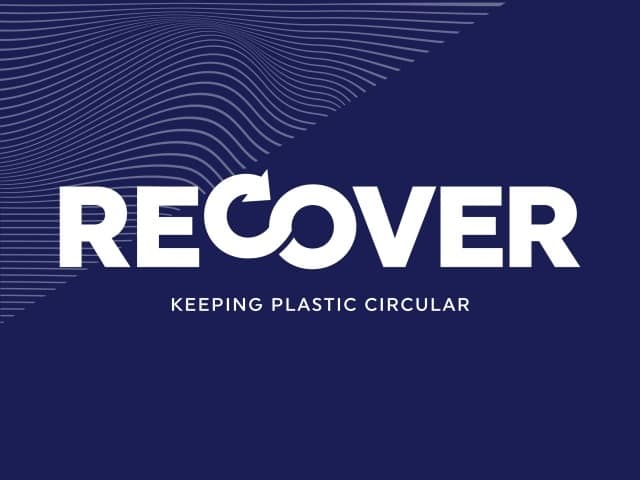
-Recycled plastics must demonstrate lower carbon footprint – Mura Technology
Recycled plastics producers must show that their products have a lower carbon footprint than not only incineration of plastic waste but also the production of virgin plastics, an executive from Mura Technology said.
“If you wish to persevere in this market, you need to demonstrate that your process is a value-add from a carbon footprint standpoint,” said Oliver Borek, chief commercial officer of Mura Technology, at the ICIS Recycled Polymers Conference in Atlanta, Georgia, US.
“It’s pointless if you are just trying to address circularity but your carbon footprint is worse than fossil. The NGOs are going to be all over you and down the line you will find that customers will turn away from you,” he added. Biodegradable-PLA -PP-Compounds
Companies seeking to demonstrate viability on this should look at generating independent and peer reviewed life cycle analysis (LCA) for their process, he noted.
“They should definitely show that you outperform incineration or in the US, landfill considerations, and you should outperform fossil equivalent because you will have an uphill battle if you don’t,” said Borek.
“It would also be very good if you can conform to certain NGO requirements such as WWF (World Wildlife Fund) principles. When you speak with large food companies and brand names, they do respect the opinions of groups like the WWF and Greenpeace and so on. They are very sensitive to how they are portrayed in the public,” he added.
The WWF position on chemical recycling includes chemically recycled plastics have at least a 20% lower carbon footprint than virgin production, among other requirements.
LIFE CYCLE ANALYSIS
The Consumer Goods Forum recently published a report in Europe with an LCA for the Mura process showing around 20% lower global warming potential (GWP) versus available data sets for pyrolysis chemical recycling processes, Borek pointed out.
In April 2022, the Consumer Goods Forum released an LCA of chemical recycling done by Sphera, showing that chemically recycled plastics via pyrolysis offer a 43% reduction in greenhouse gas (GHG) emissions compared with producing plastics from fossil fuels and incineration at the end of life. Biodegradable-PLA -PP-Compounds
Mura’s technology – called HydroPRS (Hydrothermal Plastic Recycling Solution) uses supercritical water – made from high heat and pressure – to break down polymer bonds.
The LCA also shows a clear pathway to net zero carbon emissions for Mura’s process as it produces gases that can be recycled into products and can use renewable energy, Borek said.
In terms of resource efficiency, 1 tonne of product from Mura’s recycling process avoids around 5 bbl or oil production, he added.
In September, Dow and Mura Technology announced that Mura would build the largest chemically recycled plastics project in Europe at Dow’s site in Boehlen, Germany, at 120,000 tonnes/year of output capacity. A final investment decision is targeted by the end of 2023 and the plant could start up by 2025.
Dow and Mura plan to construct multiple 120,000 tonne/year projects in the US and Europe, adding as much as 600,000 tonnes/year of capacity.
Mura also has a 120,000 tonne/year project planned in Seattle, Washington, US, called Mura Cascade ELP (End-of-Life Plastic) with start-up expected in late 2024 and offtake by Chevron Phillips Chemical.

-Teijin’s highly biodegradable PLA resin to possibly reduce microplastics
Tejin Frontier Co Ltd, the Teijin Group’s fibres and products converting company, says it has developed a practical polylactic acid (PLA) resin that biodegrades faster in oceans, rivers and soil compared to conventional PLA products.
The new plant-derived PLA resin from Teijin can be processed and moulded the same way as any other conventional PLA polymer, with the scope of reducing microplastics in the environment.
The new PLA resin from Teijin is expected to help reduce microplastics thanks to its accelerated biodegradation rate as well as reduce CO2 emissions during product lifecycles since it is made from plant-derived raw materials, says the company.
“It can be processed and moulded in the same way as conventional versions for the production of resins, films, injection and extrusion moulded products, textiles and non-woven fabrics. Biodegradable-PLA -PP-Compounds
Conventionally when PLA polymer is hydrolysed to less than 10,000Mn (average molecular weight) it can be broken down into carbon dioxide and water by bacteria and fungi. The biodegradation accelerator added by Teijin Frontier hastens hydrolysis to reduce the molecular weight more quickly than in the case of PLA polymers without such additives, thereby enabling faster biodegradation in oceans, rivers and soil.
Accordingly, the decomposition period—about six months to two years according to verification tests conducted by Teijin Frontier—can be controlled by adjusting addition conditions and the amount of biodegradation accelerator.
Teijin says the production and selling of pellets, injection-and-extrusion-molded products, textiles and non-woven fabrics made with this new PLA resin will begin in 2023 (ending in March 2024), targeting sales of several hundred million Japanese yen by fiscal 2026.
PLA resins, which are generally made from plant-derived ingredients and are biodegradable, are used in a wide range of products due to their high crystallinity and practicality. Although biodegradation performance is acceptable under hot, humid compost conditions, the rate is slowed down greatly in oceans, rivers and soil, resulting in the presence of residual microplastics for long periods of time.
Under Teijin’s ‘Think Eco’ environmental initiative, the company is striving to improve its environmental value by developing greener materials and products for applications ranging from clothing to industrial materials.
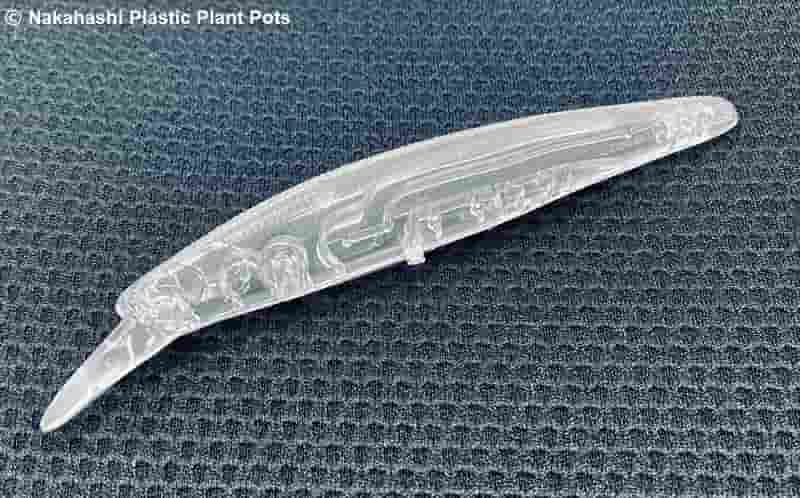
-Fashion goes green with Israeli finishing technology
Leading European textile machinery maker partners with Sonovia to cut carbon footprint of clothing production ahead of new European rules.
Europe is getting tough on the highly polluting fashion industry, and one major textile machinery brand in Germany is banking on an Israeli technology to green its processes.
Within a few years, every garment imported to Europe will need a digital identity card stating its carbon and water footprints, the presence of dangerous chemicals, and materials used in production.
“This will introduce transparency and revolutionize the textile industry,” said Axel Pieper, owner of Brückner Textile Technologies, which supplies a quarter (5,000) of the world’s fabric finishing machines. Biodegradable-PLA -PP-Compounds
Fabric finishing, the last stage in textile production, is where the fabric is dyed and/or coated with antibacterial, odor-repellent, water-repellent, UV-blocking or other substances. According to Pieper, this is the most polluting step in textile production.
“This will introduce transparency and revolutionize the textile industry,” said Axel Pieper, owner of Brückner Textile Technologies, which supplies a quarter (5,000) of the world’s fabric finishing machines.
Fabric finishing, the last stage in textile production, is where the fabric is dyed and/or coated with antibacterial, odor-repellent, water-repellent, UV-blocking or other substances. According to Pieper, this is the most polluting step in textile production.
Pieper expects the coming regulation will convince many textile manufacturers to follow suit; revenue in the first phase is expected to reach tens of millions of dollars.
“I am convinced that Sonovia’s technology is the best way to reduce the carbon and water footprint not only in the production of textiles but also in the use of textiles,” said Pieper.
Earlier this year, Sonovia partnered with Italian denim manufacturer PureDenim to transform indigo dyeing by reducing the intensive use of water and energy and improving dye durability.
Igal Zeitun, CEO of Sonovia, said the textile industry is “desperately looking for technological solutions that will allow even partial reduction of pollution while maintaining the same product quality.
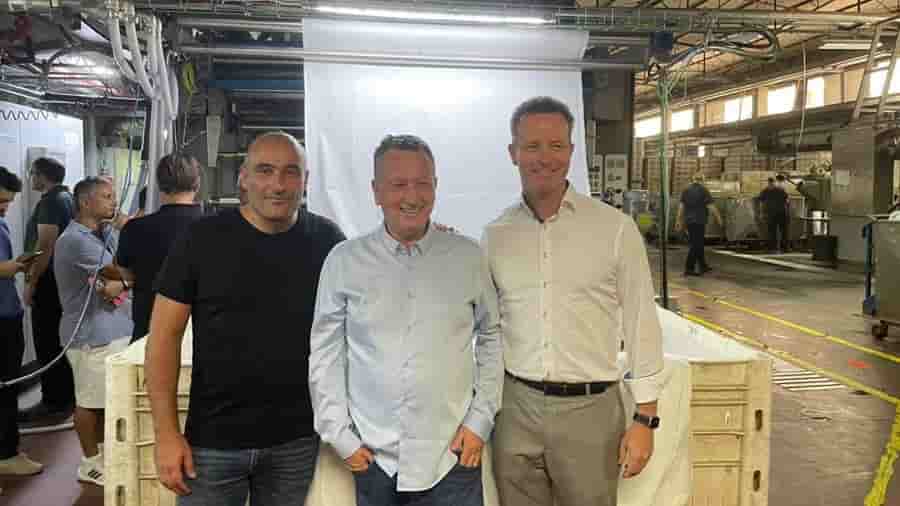
-D&W Fine Pack Implements 100% Recycled Plastic Products Manufacturing
D&W Fine Pack has announced the implementation of a multimillion-dollar investment in sustainability technology at its Fort Wayne, Indiana manufacturing facility.
This new extrusion technology, slated to debut in January, 2023, is the largest of its kind in the US and gives the company the capability to make food packaging products from 100% post-consumer recycled PET, incorporating a broader range of plastic flake and saving energy in manufacturing.
D&W Fine Pack’s new technology produces FDA-certified food packaging at scale from 100% recycled PET plastic.Tweet this
This process creates FDA food grade PET sheet from plastics that would have otherwise ended up in a landfill. Biodegradable-PLA -PP-Compounds
This technology has achieved a global scale of acceptance, with international certifications from FDA, EFSA, Anvisa, Invima and Senasa.
“We are excited to expand our capability to run up to 100% recycled material, with flexibility between post-consumer and post-industrial waste PET that conforms with FDA requirements,” said Gary Rehwinkel, CEO and President of D&W Fine Pack.
“The new infrastructure that we are implementing to support this initiative will allow us to streamline the process, become more efficient, and save energy. On average, the expectation is an energy savings of 29% versus conventional technology.”
PET, or Polyethylene terephthalate, is a clear, strong, lightweight plastic that is widely recycled.
EFSA is the The European Food Safety Authority, Anvisa is the Brazilian Health Regulatory Agency, Invima is the Colombia National Food and Drug Surveillance Institute and Senasa is The National Food Safety and Quality Service of Argentina.

-Europe set to import banned Russian diesel without knowing
European motorists could find Russian diesel in their tanks even after bans take effect because regulators lack tools to trace the origin of fuel when it has passed through other countries, said Hydrocarbonprocessing.
The European Union banned Russian crude imports from Dec. 5 and will ban Russian oil products from Feb. 5, as it attempts to deprive Russia of oil revenues. Britain ended oil and oil product imports from Dec. 5. The challenges in tracking crude once it is refined and diesel once it is blended mean some Russian diesel is likely to be delivered to and re-exported from countries such as India and Turkey, market sources said.
Europe is struggling to replace up to 600,000 bpd of Russian supply, according to Eugene Lindell, refining and products market analyst at consultancy FGE. However, the reputational risk associated with buying Russian fuel, coupled with insurance difficulties, means only limited Russian volumes are likely to find their way into Europe, transported by small players. Biodegradable-PLA -PP-Compounds
How will diesel customs and exchanges police imports? Dutch customs, which oversee the major Amsterdam-Rotterdam-Antwerp trade and storage hub, UK enforcement authorities, and the Intercontinental Exchange will check official certificates of origin for import ships.
In case of doubt, UK and Dutch customs can request additional documents to help determine origin, such as contractual agreements, invoices, or bills of lading.
We remind, LUKOIL Neftochim Burgas , Bulgaria’s only oil refinery, may have to shut down if the government does not follow through on plans to allow the Russian-owned business to continue exporting. The European Union has agreed to a ban on Russian crude oil imports as part of its sanctions against Russia for its invasion of Ukraine in February. The ban takes effect next month, but Bulgaria has been given an exemption and is allowed to import Russian crude until the end of 2024.
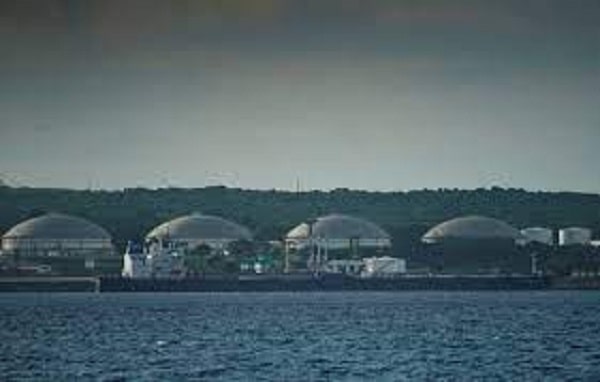
-Mitsui Sees Strong Demand for Recycled PP Compounds
President and CEO Osamu Hashimoto outlines the resin supplier’s strategy to develop more sustainable materials for mobility and other sectors.
Predicting a 10% upswing in polypropylene (PP) compound sales in the second half of its fiscal year ending in March 2023, Mitsui Chemicals President and CEO Osamu Hashimoto says the company is more than well-placed to serve the sustainability needs of its customers in the mobility segment moving forward. He was speaking in Tokyo at his annual CEO presentation.
“We have already received various requests from clients for the supply of recycled PP compounds incorporating post-consumer recyclate,” noted Hashimoto. Molders are currently evaluating colored compounds with 30 to 50% recyclate content exhibiting the same quality as virgin products, according to the company. “We are now working to establish a business model, particularly through our affiliate Advanced Composites in the United States,” he added. Biodegradable-PLA -PP-Compounds
Besides recycled grades, Mitsui Chemicals is also establishing frameworks for plastics based on chemically recycled feedstocks and biomass. In August, the company invested in Asian firm Apeiron Bioenergy, a leading collector and processor of renewable feedstocks including used cooking oil (UCO) and palm oil mill effluent (POME) in order to secure a source of bio-based feedstocks. Earlier, in December 2021, the company took delivery of its first shipment of 3000 tonnes of bio-based naphtha from Neste’s Singapore refinery. Subsidiary Prime Polymer then started shipping its first commercial PP grades, certified using the mass balance method in accordance with ISCC PLUS certification, in March 2022.
As earlier reported, Mitsui Chemicals is also in the process of developing its own bio-based production technology for propylene, involving the fermentation of various biomass, mainly non-edible plants, to produce isopropanol (IPA), which is then dehydrated to obtain propylene monomer.
In terms of chemical recycling, Mitsui Chemicals is partnering with Microwave Chemical Co. in an initiative aimed at commercializing the use of microwave technology in the chemical recycling of plastic waste. The two partners also plan to apply microwave technology to make carbon fiber via an energy-efficient process.
Carbon capture is another area that Mitsui Chemicals is contemplating. In October 2021, it established the Mitsui Chemicals Inc. – Carbon Neutral Research Center within Kyushu University’s International Institute for Carbon-Neutral Energy Research. One research target is conversion of captured carbon into methanol for use as a feedstock.
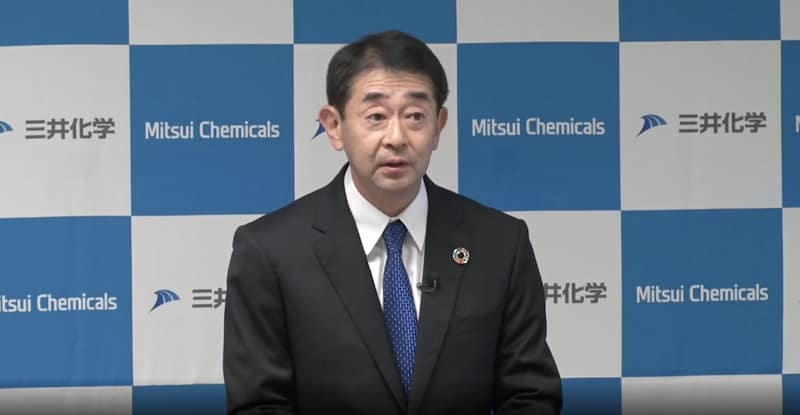
Biodegradable-PLA -PP-Compounds
Heimtextil-2023 – Bioplastics – CPL 09-12-2022
